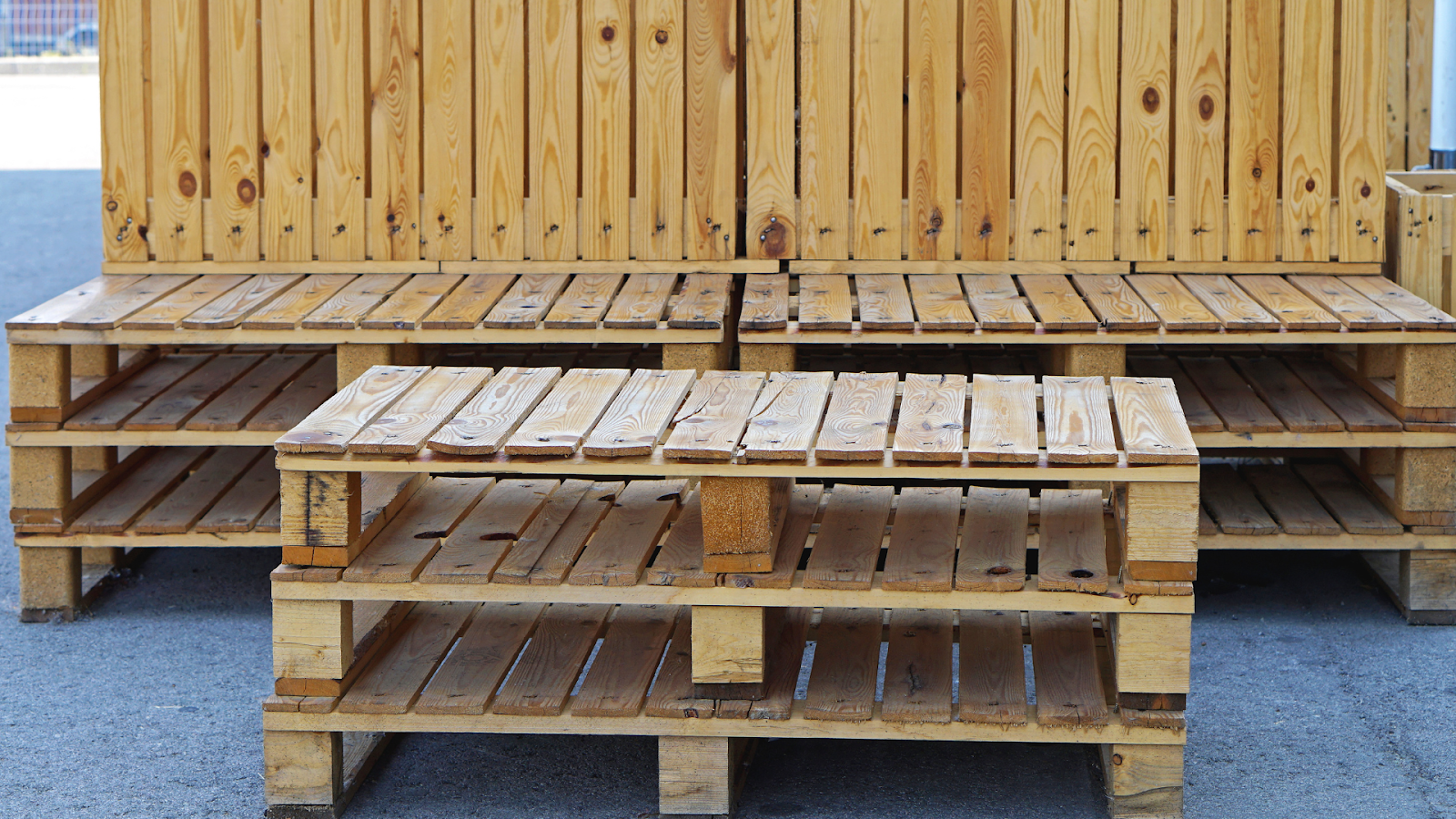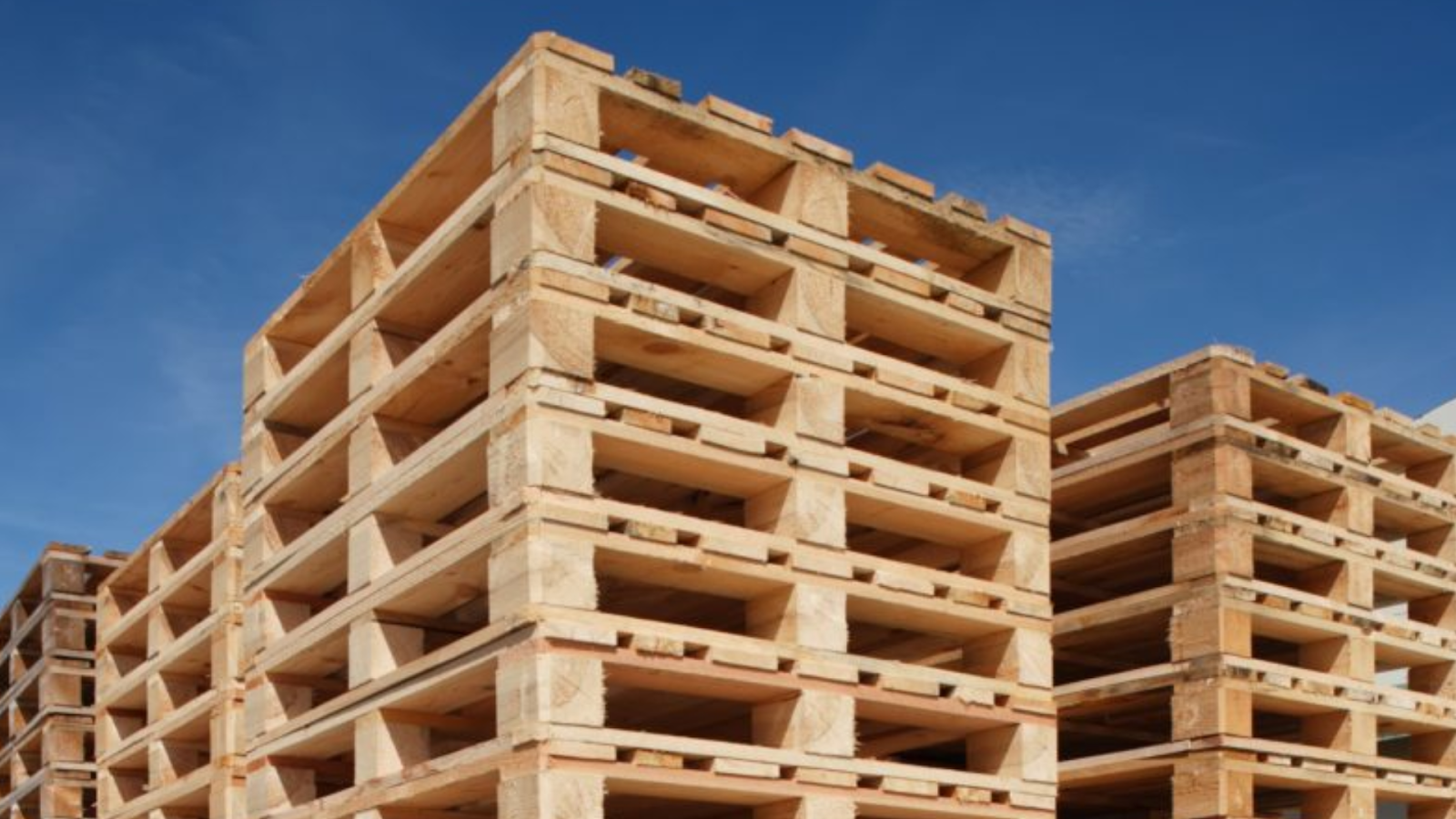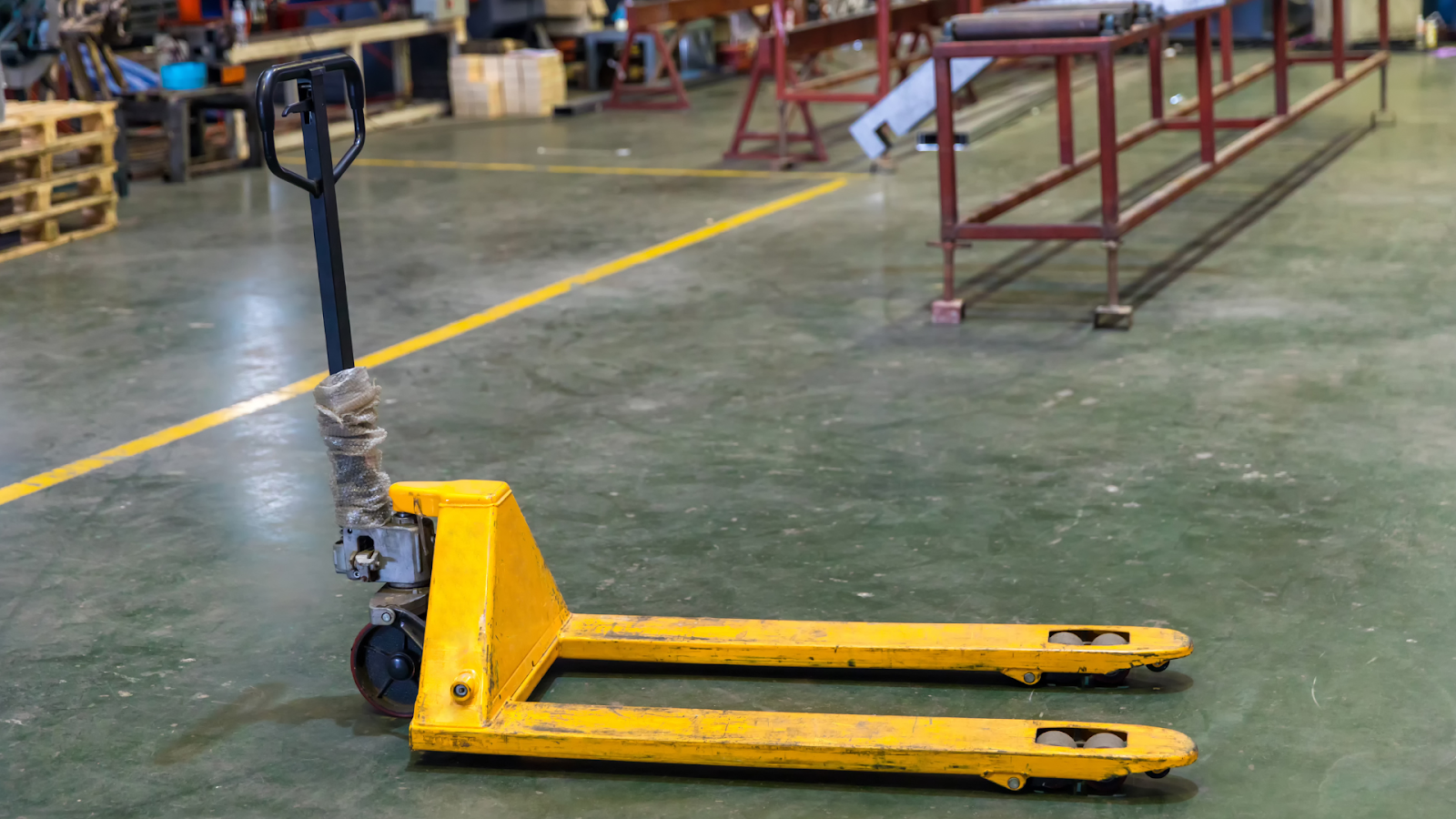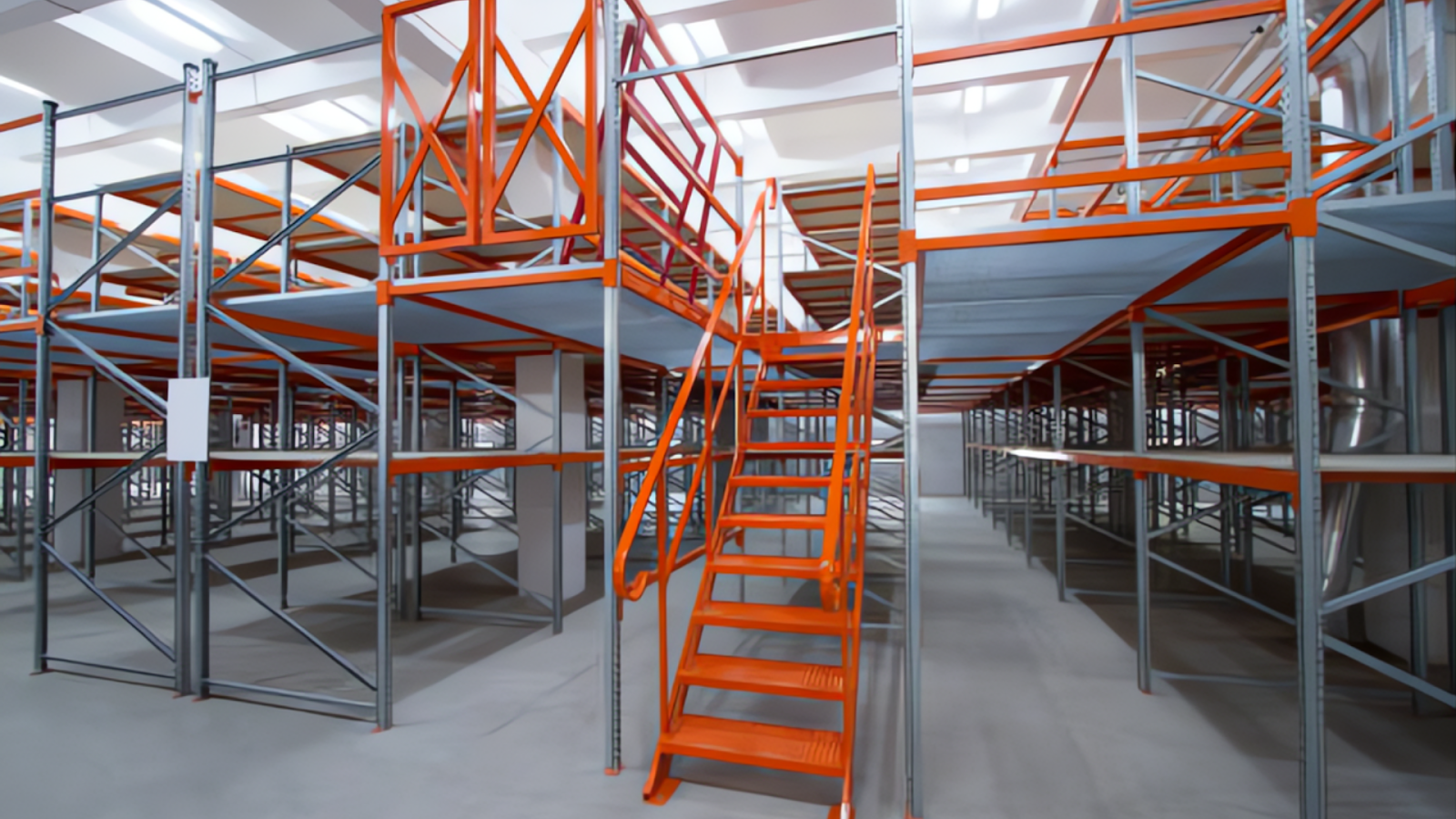Walk through any warehouse in America, and you’ll see hundreds of wooden pallets stacked under racks or lined along loading bays. They all look similar—but their dimensions can vary just enough to affect how safely and efficiently you can store, stack, and ship goods.
One of the most overlooked specs is pallet height. An extra inch can mean the difference between a safe racking clearance and a damaged product or a truck that won’t close.
This guide outlines the average pallet height, explains regional and material variations, and covers standard pallet widths and footprints essential for warehouse planners and logistics managers.
Key takeaways
When you just need the number, here it is:
Across top manufacturers such as Kamps Pallets, PalletOne, and The Cary Company, the most common U.S. wooden pallet height is about 6 inches.
The Euro EUR-1 standard sits slightly lower at 144 mm (≈ 5.67 in), per the European Pallet Association (EPAL).
Plastic and specialty export pallets fall into the same general window—typically 5–6.7 inches depending on their deck style and load rating.
So, for most U.S. warehouse planning, if you don’t know the exact spec, assume ≈ 6 inches. That number keeps you safely aligned with rack and trailer limits.
For a deeper dive into racking structure compatibility, see Understanding Pallet Racking Dimensions and Sizes.

In the United States, the standard pallet footprint—defined by the Grocery Manufacturers Association (GMA) and now maintained by the Consumer Brands Association—is:
48 inches long × 40 inches wide × approximately 6 inches high.
That 40-inch width fits most warehouse rack beams, pallet jacks, and forklift tine spacing in U.S. facilities. It’s also the size most freight carriers expect when quoting less-than-truckload (LTL) shipments.
Outside the U.S., the Euro pallet—designated EUR-1—measures 1200 × 800 mm (≈ 47.24 × 31.50 in). Other Euro variants include EUR-2 (1200×1000 mm) and EUR-3 (1000×1200 mm).
In short, 40 inches wide and ≈ 6 inches tall is the benchmark configuration behind most U.S. warehouse infrastructure.
Also read: Guide to Different Types of Pallet Racking

When you compare “average pallet height” numbers online, you’ll find small but consistent differences — some say 4.5 inches, others 6.5 inches. Those variations aren’t errors; they’re the natural result of design and material differences.
Here’s what actually drives those changes:
A standard wooden pallet has three basic elements — top deck boards, bottom deck boards, and stringers or blocks in between.
So, if one manufacturer uses thicker boards or an extra bottom slat, the final height rises by half an inch or more.
Over time, a pallet pool that includes repaired units will show minor variations. Even a ¼-inch difference can matter when you’re maximizing trailer space or rack height.
Every region defines its own “standard.”
So “average height” always depends on where you’re operating and what your materials-handling system is designed to accept.

A pallet’s height might seem minor—but multiply that by thousands of loads or hundreds of rack levels, and it directly affects space utilization, compliance, and transport safety.
Let’s break down the major operational areas where that 1-inch difference really matters:
Freight carriers measure total shipment height including the pallet.
Warehouse racking systems depend on consistent pallet profiles.
For new rack designs, it’s safest to plan with a nominal 6-inch pallet height unless your facility uses a specific standardized model.
Pallet-jack and forklift forks are designed to clear the bottom deck openings.
Stacked empty pallets should not exceed manufacturer-recommended limits.
When shipping overseas, the container's internal height is critical:
Before finalizing racking or trailer specs, always record:
Also read: How to Anchor Pallet Racks Safely

Below is a consolidated reference of the most widely used pallet standards across global supply chains. These numbers reflect nominal averages — actual measurements can vary slightly by manufacturer or material. Always confirm the exact spec sheet before you finalize racking or container dimensions.
Planning tip: If you’re designing rack beams, forklift paths, or container loading patterns, use 6 inches as the baseline height for U.S. pallets and 144 mm for Euro pallets. Then confirm the actual pallet spec before installation or transport planning.
The typical U.S. 48×40 wood pallet stands around 6 inches tall, though actual height can range from 5.5 to 6.5 inches depending on construction. The Euro EUR-1 pallet is 144 mm (≈ 5.67 inches) tall.
In the U.S., the standard pallet width is 40 inches and the length is 48 inches.
In Europe, the EUR-1 pallet measures 800 mm wide × 1200 mm long.
Yes. Wooden pallets use thicker deck boards and stringers, usually near 6 inches tall.
Plastic pallets can range from 5 to 6.7 inches, depending on whether they’re nestable or rackable.
Metal pallets may exceed 7 inches for reinforcement.
Most U.S. carriers recommend a total palletized height (pallet + load) of ≤72 inches to ensure trailer clearance.
For double-stacked shipments, each layer should typically stay ≤48 inches tall.
Height affects rack spacing, trailer loading, and lift compatibility. A difference of even half an inch across hundreds of racks can reduce usable storage volume or violate clearance requirements.
Your warehouse layout, beam spacing, and dock heights all depend on accurate pallet data.
If your facility handles mixed pallet types — wood, plastic, or Euro — it’s worth confirming real dimensions before adjusting racks or load patterns.
Need help configuring your space?
Talk to a warehouse specialist to verify racking clearances for your team.




Ready to Upgrade Your Process Operations?